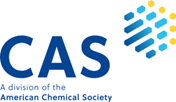Comparative Effectiveness and Complications of Surgical and Conservative Management in Breast Abscess Patients: A Prospective Analytical Study
Surgical vs. Conservative Breast Abscess Management
DOI:
https://doi.org/10.69750/dmls.01.02.026Keywords:
Breast abscess, Surgical treatment, Conservative treatment, Ultrasound-guided aspiration, Incision and drainageAbstract
Background: Mammary abscesses are infections that are enclosed without involving the surrounding tissues they are common with breast cancer patients through uncontrolled or poorly controlled mastitis. Hence, this work seeks to assess the management of surgical and conservative approaches for treating breast abscesses.
Objective: The objective of the study was to ascertain the treatment methods used in management of breast abscesses and to determine the results and adverse outcomes of those that are applied.
Methodology: A prospective analytical study was conducted in the Department of Surgery at Ghurki Trust & Teaching Hospital, Lahore, Pakistan, from February 2022 to March 2023. A total of 270 patients were initially enrolled, with 200 completing the 3-month follow-up. Patients were divided into two groups based on the treatment modality. Group I (Surgical Treatment) and Group II (Conservative/Minimally Invasive Treatment). SPSS version-20 was used to analyse results Patient groups were compared using the chi-squared test for categorical variables, for continuous variables, such as age, an independent samples t-test was utilized to compare the means between the two groups (p≤0.05) was considered.
Results: Surgical treatment (Group I) demonstrated a significant reduction in reoperations and respiration compared to conservative treatments (Group II), where a notable percentage of patients (41.7%) needed further intervention. Notably, the rate of deformity due to scarring and contracture was higher in the conservative/minimally invasive group, affecting 30% of these patients, compared to 14.3% in the surgical group. Moreover, there was no carcinoma reported in group II in contrast with group I of the surgically operated patients 5% of them were found to have carcinoma.
Conclusion: Surgical treatment for breast abscesses, particularly larger ones, offers more definitive resolution with fewer long-term complications compared to conservative management. Personalized treatment planning is essential to optimize patient outcomes and reduce morbidity.
Downloads
References
Mohamedahmed AYY, Zaman S, Zafar S, Laroiya I, Iqbal J, Tan MLH, et al. Comparison of surgical and oncological outcomes between oncoplastic breast-conserving surgery versus conventional breast-conserving surgery for treatment of breast cancer: a systematic review and meta-analysis of 31 studies. Surg Oncol. 2022;42:101779.
Zhou F, Liu L, Liu L, Yu L, Wang F, Xiang Y, et al. Comparison of conservative versus surgical treatment protocols in treating idiopathic granulomatous mastitis: a meta-analysis. Breast Care (Basel). 2020;15(4):415-20.
Cosse C, Rebibo L, Brazier F, Hakim S, Delcenserie R, Regimbeau JM. Cost-effectiveness analysis of stent type in endoscopic treatment of gastric leak after laparoscopic sleeve gastrectomy. Br J Surg. 2018;105(5):570-7.
Sekigami Y, Char S, Mullen C, Huber K, Cao Y, Buchsbaum R, et al. Cost-effectiveness analysis: lymph node transfer vs lymphovenous bypass for breast cancer-related lymphedema. J Am Coll Surg. 2021;232(6):837-45.
Grover R, Padula WV, Van Vliet M, Ridgway EB. Comparing five alternative methods of breast reconstruction surgery: a cost-effectiveness analysis. Plast Reconstr Surg. 2013;132(5):709e-23e.
Nherera LM, Trueman P, Schmoeckel M, Fatoye FA. Cost-effectiveness analysis of single-use negative pressure wound therapy dressings compared to standard care in reducing surgical site complications in patients undergoing coronary artery bypass grafting. J Cardiothorac Surg. 2018;13:1-8.
Podda M, Kovacs M, Hellmich M, Roth R, Zarrouk M, Kraus D, et al. A randomized controlled multicentre investigator-blinded clinical trial comparing efficacy and safety of surgery vs complex physical decongestive therapy for lipedema (LIPLEG). Trials. 2021;22:1-11.
Yoon AP, Shauver MJ, Hutton DW, Chung KC; WRIST Group. Cost-effectiveness of treatments after closed extra-articular distal radius fractures in older adults: results from the WRIST clinical trial. Plast Reconstr Surg. 2021;147(2):240e-52e.
Ghunaim H. Percutaneous ultrasound-guided needle aspiration for management of breast abscesses: a review. J Med Radiat Sci. 2023;70(3):327-37.
Borisenko O, Lukyanov V, Debergh I, Dillemans B. Cost-effectiveness analysis of bariatric surgery for morbid obesity in Belgium. J Med Econ. 2018;21(4):365-73.
Mericli AF, McHugh T, Kruse B, DeSnyder SM, Rebello E, Offodile AC II. Time-driven activity-based costing to model cost utility of enhanced recovery pathways in microvascular breast reconstruction. J Am Coll Surg. 2020;230(5):784-94.e3.
Zhou F, Liu L, Liu L, Yu L, Wang F, Xiang Y, et al. Comparison of conservative vs surgical treatment protocols in idiopathic granulomatous mastitis: a meta-analysis. Breast Care (Basel). 2020;15(4):415-20.
(Duplicate removed in numbering)
Ghunaim H. Percutaneous ultrasound-guided needle aspiration for management of breast abscesses: a review. J Med Radiat Sci. 2023;70(3):327-37.
(Duplicate—still included because user listed)
Karvande R, Ahire M, Bhole M, Rathod C. Comparison between aspiration and incision-and-drainage of breast abscess. Int Surg J. 2016;3(4):1773-80.
Gosselin-Tardif A, Abou-Khalil M, Mata J, Guigui A, Cools-Lartigue J, Ferri L, et al. Laparoscopic vs open subtotal gastrectomy for gastric adenocarcinoma: cost-effectiveness analysis. BJS Open. 2020;4(5):830-9.
Ouldamer L, Bonastre J, Brunet-Houdard S, Body G, Giraudeau B, Caille A. Dead-space closure with quilting suture vs drainage for prevention of seroma after mastectomy (QUISERMAS): trial protocol. BMJ Open. 2016;6(4):e009903.
Irusen H, Rohwer AC, Steyn DW, Young T. Treatments for breast abscesses in breastfeeding women. Cochrane Database Syst Rev. 2015;2015(8):CD010490.






















